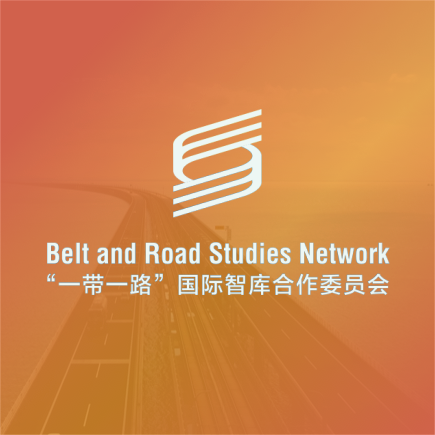
Jusuf Wanandi, Vice Chair, Board of Trustees, Centre for Strategic and International Studies (CSIS) Foundation, Indonesia
The Jakarta Post, 13 May 2019
Since 2013, when it was launched by President Xi Jinping in Kazakhstan and Jakarta, the Belt and Road Initiative (BRI) has developed very fast. Initiated by China, it was meant to assist developing countries in need of building infrastructure, which needs much funding and investment. But since its inception, the BRI has undergone changes to become a common endeavor of many countries and international organizations for joint cooperation in infrastructure projects.
Immediately after its inception, it was recognized that the BRI should be broadened beyond infrastructure development, and include cooperation on trade, finance and people-to-people relations to get off the ground effectively. As the program has become very big and all-encompassing, it has become a global effort.
At the Second BRI Forum held on April 24 to 26 in Beijing, 126 countries and 29 international organizations signed BRI cooperation agreements. This, indeed, marked an important development.
Meanwhile, with the participation of countries, including think tanks and research institutions, both national and international, much feedback and intellectual support has been received by the Chinese government and other institutions through the efforts of the Development Research Centre of the State Council (DRC), which oversees the cooperation of think tanks, called the Silk Road Think Tank Network (SILKS) set up in 2017.
Since then the Chinese government has welcomed more feedback and input on the BRI, and acknowledged that BRI cooperation should be open, transparent, zero-tolerance for corruption and a green initiative of its program with sustainability in mind. Through these efforts, the DRC and Centre for Strategic and International Studies (CSIS) Indonesia conducted joint research on Indonesia’s participation in the BRI and what it means for Indonesia’s economic development.
The study has been delivered to both governments as important feedback and for Indonesia, it has become input for building public awareness. At the beginning, the BRI idea was skeptically received by the public, but following dissemination of the study and the improved programs, public opinion has turned around.
In this context, the efforts taken in creating wider networking and cooperation among think tanks as initiated by the Xinhua Institute were welcomed by all invited think thanks and their readiness to participate in this new initiative, the Belt and Road Studies Network (BRSN).
If and when some emerging economies do not have enough capacity to conduct their own studies for their participation in the BRI, the BRSN can provide assistance and support.
In light of United States President Donald Trump’s initiative for “America First “principles in US foreign policy, which rejects multilateralism, and to put its own economy first, it is imperative for others to cooperate closer in order to fill in the gaps or lacuna in the global economic order created by such a unilateralist policy. One of form of cooperation is the BRI strategy as initiated by China but which is meant for the international community as a whole.
The participation of more countries and institutions in the BRI has improved the idea for open, transparent, zero tolerance for corruption, green and sustainable cooperation. For this purpose, the BRI also invited developed countries to join, so the BRI could really serve as a force for global cooperation and integration, and to maintain the global system as best as possible. The alignment of the BRI with 29 international cooperation agreements is of critical importance to its functioning as reinforcement of international order.
What is most important in China’s effort through the BRI, under its theme of “Building a community with a shared future for mankind”, is access to market and technologies. In summary, China will have to engage in benefaction in order to secure strong support from other economies. Sharing the Chinese market and technology resources particularly with developing BRI economies is apparently a very good strategy.
Meeting the challenges of inclusive and herculean task to perform irrespective of the levels of policy-making one talks about. In theory, the best approach to such development is well-shared, distributed technology progress in all areas of application: information and communication technologies (ICT), genetic engineering, artificial intelligence and technology-enhanced culture.
With ICT, farmers can trade with far-away places at reduced transaction costs. With genome engineering, agricultural and animal husbandry productivity can be raised multiplicatively, health care can be improved and the burden of diseases reduced. Digitalization of culture such as augmented reality raises the tradability of culture within and across borders. In all these new technologies, China is one of the recognized leaders.
China should leverage that technology leadership to advance the BRI. “Techno BRI” with diverse windows of cooperation should be made an important block of the BRI. Each window would be opened to participation to all countries on carefully negotiated terms and conditions of participation.
In designing and implementing “Techno BRI”, lessons can be drawn from European Union technology programs and enriched with Chinese experiences with the ideation, research and development, prototyping, acquisition of intellectual property, incubation and start-up and up-scaling. Success in “Techno BRI”will contribute to sustainable catching up, allowing developing economies to grow at higher added value and technology leaders to reap greater benefits from their hard-earned technological advantage.
今年1月,新冠疫情突然而至。为了防止疫情扩散,我国采取了史无前例的交通阻断及人流限制措施,这也为我国农业农村经济发展带来了巨大挑战。
